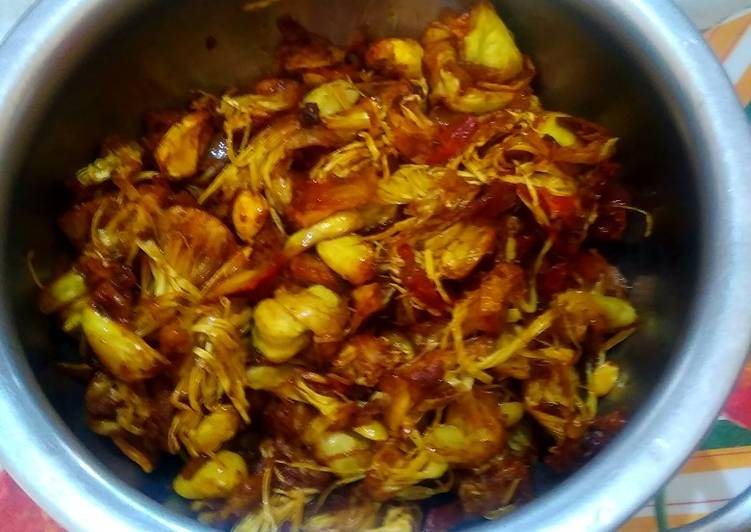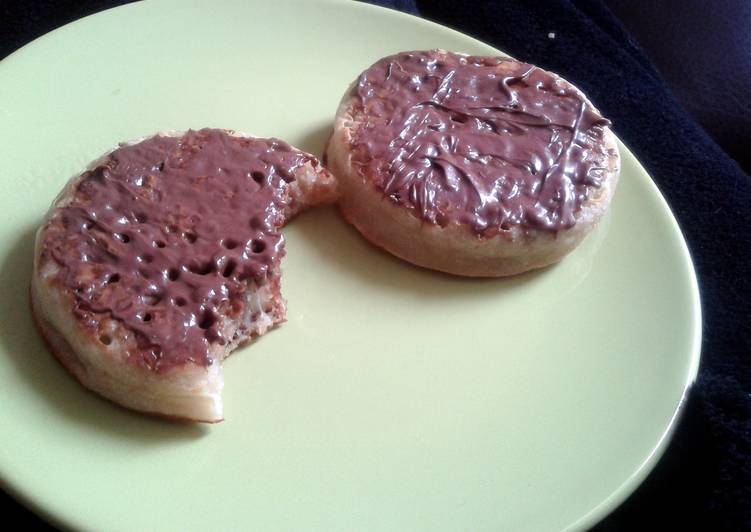
Hello everybody, I hope you’re having an amazing day today. Today, I’m gonna show you how to make a distinctive dish, lamb on the spit. It is one of my favorites food recipes. For mine, I am going to make it a little bit tasty. This is gonna smell and look delicious.
Lamb on the spit is one of the most well liked of recent trending meals on earth. It’s easy, it is fast, it tastes delicious. It is enjoyed by millions every day. Lamb on the spit is something that I’ve loved my entire life. They’re nice and they look fantastic.
Roasting a whole lamb on a spit is a lengthy process, so plan to spend at least four to five hours at it, depending on the size of the lamb. Light one bag of charcoal in the center of the spit. Prepare the basting mixture while the coals are heating. Now you're ready to prep the lamb.
To get started with this recipe, we must first prepare a few components. You can have lamb on the spit using 6 ingredients and 14 steps. Here is how you can achieve it.
The ingredients needed to make Lamb on the spit:
- Get 1 whole (about 11 kg -13 kg) lamb
- Get 1 cup salt and pepper
- Make ready 2 metal clamps for the spit
- Take wire and pliers for tying the lamb on the spit
- Make ready twine and a thick needle for sewing the lamb
- Make ready 10 kg – 13 kg coal
Spit-roast veal spit-roast lamb chicken(on the spit) + potatoes(on the dripping pan). Телятина на вертеле баранина на вертеле курица( на вертеле) Баранья нога на вертеле, шашлык из телятины, крем- суп из раков или пельмени с щучкой …. Lamb or pork ham on a spit, skewers of. Of all the spit-roast-able animals, one of the best ones to slide on a spit during the spring months is a lamb. To be fair, it's pretty great any time of the year, but when you consider Easter is a holiday where one of the major proteins served is — you guessed it — lamb, now is as good a time as ever to learn.
Steps to make Lamb on the spit:
- PreparationThe first thing you should do is skewer the lamb. Insert the spit from the hind legs towards the head, through the belly, breast neck and the head.
- The hard part is passing the skewer through the head, you will need someone to hold the head and push towards the skewer while you push and twist the skewer until it pierces the skull of the lamb.
- Next comes the tying on the spit, but after you have tested it on the place that you will use for roasting to establish the right position on it for tying the lamb. Start with the hind legs that you cross over the spit and tie them with some wire. Push the meat fork into the legs and stabilize it on the rotisserie with its screw.
- Secure it in two more places at the spine of the lamb, one low at the height of the stomach and another at the breast. Use metal clamps or wire but the clamps are more practical!
- Finally, secure the neck of the lamb tightly with wire.
- Test the effectiveness of the tying process by shaking the spit up and down vigorously. It is very important to secure the lamb tightly since in any other case, there is the danger that the spit will turn during roasting but the lamb not!!!
- Continue with the salt and pepper. Coat well all the inside of the lamb. Score the inside area of the hind and front legs but carefully so that you don't pierce the outer part. Also coat with salt and pepper, pressing with your finger.
- Sew the lamb's belly with twine so that it is completely sealed. You should take care to not pierce the lamb in any place (other than the points where you have secured it to the spit)…
- …and the belly should be sewn shut so that as you roast your lamb it keeps all its liquids inside and cooks in them. This helps to keep the undesired blood away from the thick pieces of the lamb and the bones and also to result in a well cooked and juicy piece of meat.
- Season the lamb with salt and pepper and sew the fat caul on it so that it stays put while roasting. The caul melts during roasting and doesn't let it dry or burn.
- RoastingYou will need an equal amount of coal for roasting to the weight of the lamb. Light your fire at least one hour prior to roasting and allow enough time for the coals to turn into embers. Then, spread them out placing the most amount under the hind and front legs and leave very few under the belly.
- Place the lamb over the fire at quite a distance from it (about 40-50 cm) and turn the spit by hand fast for at least 1 hour or more, depending on the intensity of the fire.
- Take care that the lamb doesn't burt at the start when the fire is the strongest and that is why you have to turn the spit quite fast. After 1 - 1 1/2 hour (you can use a motor rotisserie) depending on the intensity of the fire and the way the roasting is progressing, you can lower the spit.
- The required time for roasting is about 3 to 3 1/2 hours. When it is done, place the spit vertically over a large tray, cut the wires, unscrew the meat forks and the lamb falls on the tray! Ready to cut and consume!!
Of all the spit-roast-able animals, one of the best ones to slide on a spit during the spring months is a lamb. To be fair, it's pretty great any time of the year, but when you consider Easter is a holiday where one of the major proteins served is — you guessed it — lamb, now is as good a time as ever to learn. Download on the App Store Get it on Google Play. Lamb on the spit (Arni sti Souvla) possibly the most tastiest lamb recipe, read about the Greek traditional way of cooking and serving this Easter specialty. Learn how to roast a whole lamb on a spit, a tradition during Greek Easter, with photos and step-by-step instructions to follow at home.
So that is going to wrap this up for this special food lamb on the spit recipe. Thanks so much for reading. I’m sure you can make this at home. There is gonna be more interesting food at home recipes coming up. Don’t forget to bookmark this page in your browser, and share it to your family, colleague and friends. Thank you for reading. Go on get cooking!

